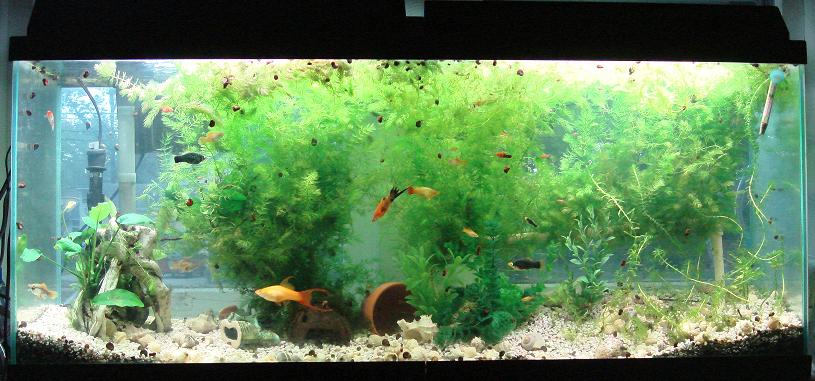Also would there be a problem mixing daces in with them like the black nosed?
Edited by exasperatus2002, 20 July 2010 - 09:42 AM.
Posted 20 July 2010 - 09:29 AM
Edited by exasperatus2002, 20 July 2010 - 09:42 AM.
Posted 20 July 2010 - 12:14 PM
I have a 55 gallon, How many darters & darter species could I keep in it should I switch it over to a darter tank.
Also would there be a problem mixing daces in with them like the black nosed?
Posted 20 July 2010 - 01:08 PM
Edited by blakemarkwell, 20 July 2010 - 01:09 PM.
Posted 21 July 2010 - 10:19 AM

Edited by Okiimiru, 21 July 2010 - 10:22 AM.
Posted 23 July 2010 - 04:39 PM
I have a 55 gallon, How many darters & darter species could I keep in it should I switch it over to a darter tank. My local darter species is the tesselated but I see theres several others I really like like the green sided, banded, rainbow, tangerine...ect.
Also would there be a problem mixing daces in with them like the black nosed?
Posted 23 July 2010 - 06:49 PM
The best thing you did was come to this website, asking questions prior to making your decision.
Since I don't know your background in the aquarium hobby, maybe you have considered most if not all of the following. Not only do I agree with Blake as different darters prefer different habitats which may differ in water flow, temperature, ph, hardness, substrate, plants or not etc... how "heavy" you load you aquarium will depend on numerous other variables. What filtration are you planning to use? Adult size of the fish? Regular water changes? Can you meet the food requirements? Aggresiveness?
Some people have the commercial "tropical fish" mentality thinking they can throw anything together in a tank because we like this or that fish and don't give enough consideration for what individual fish need. Or they get the fish then wonder why their fish end up with problems. Certainly it is possible keep different fish together(to a point), and the fish may survive but if their needs aren't met will they be remain healthy and showing their best? Anything's possible but most likely not. Too many times I have seen people leave the hobby or change types of fish because they "failed" or it was more work than they expected etc... when all they had initially to do was ask questions and investigate. Hopefully you'll find keeping these fish an enjoyable experience.
Posted 24 July 2010 - 11:35 PM
Some people have the commercial "tropical fish" mentality thinking they can throw anything together in a tank because we like this or that fish and don't give enough consideration for what individual fish need. Or they get the fish then wonder why their fish end up with problems. Certainly it is possible keep different fish together(to a point), and the fish may survive but if their needs aren't met will they be remain healthy and showing their best? Anything's possible but most likely not.
Edited by Okiimiru, 24 July 2010 - 11:38 PM.
Posted 25 July 2010 - 08:42 AM
Posted 29 July 2010 - 08:19 PM
If that was a jibe at me or at people like me who house fish from different areas of the world within the same aquarium, then I'd like to defend myself and them. Yes, I did mention earlier in this topic that I keep swordtails and darters together. In fact I keep 6 bettas, 20 to 30 swordtails, and 11 orangethroat darters together. Don't gasp in horror and surprise. All of the fish get along, they all live within their preferred water requirement, and all of the fish are capable of living comfortably and even breeding in the setup of the tank. Just because they all come from different continents does not mean that them inhabiting the same aquarium waters is unholy or wrong.
I think a lot of the people who are members of NANFA have this strong, irrational dislike of mixing native and exotic fish in the same tank. When really, there would be a lot more people willing to embrace native fish as pets if natives were introduced to people as possible cohabitors of tanks with species of fish that they already know and love. The way to get more people to love native fish is to embrace native and exotic cohabitation, not shun it. Because in truth, some of these native fish are really great, and I'd like to see people able to buy them from pet stores and learn to like them, too.
Posted 30 July 2010 - 07:44 PM
0 members, 0 guests, 0 anonymous users